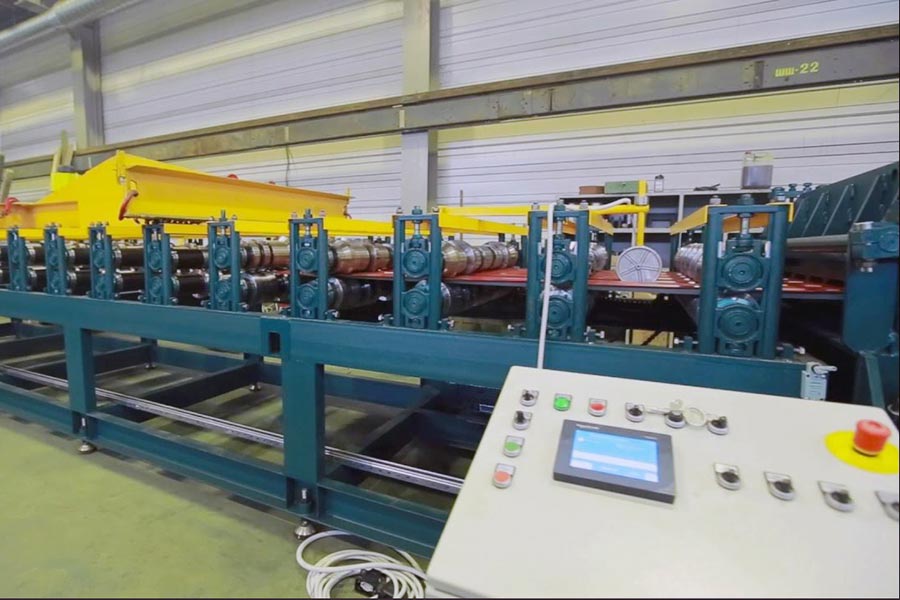
Global economic and geopolitical dynamics are the most fundamental factors that shape the industrial policies of countries. In recent years, the Russian Federation has been implementing important policies with the aim of reducing foreign dependency and strengthening its own industrial production. One of the sectors at the heart of these policies is the roll-forming machinery market, which forms the basis of the metalworking and manufacturing industry. How Russia manages the balance of imports and domestic production in this area is a reflection of the country's overall industrial strategy.
The main pillars of Russia's industrial policies
Russia's industrial policies are based on an "import substitution" strategy, which has become more evident especially with the geopolitical developments that started after 2014 and in 2022. The main objectives of this strategy are:
- Ensuring Economic Security: To increase the economic security and resilience of the country by reducing foreign dependency in strategically important sectors.
- Encouraging Local Production: To support the local production of high value-added products, thus creating employment and improving technological capacity.
- Developing Export Potential: To not only meet the needs of the domestic market by strengthening local production, but also to open up to regional markets such as the Commonwealth of Independent States (CIS) and global markets.
- Gaining Technological Independence: Minimizing dependency on foreign licenses and suppliers, especially in critical technologies.
Import and Domestic Production Balance in Roll Forming Machines Market
Roll forming machines are used in many sectors that are vital to the Russian economy, such as automotive, construction, energy, warehousing, and logistics. The balance between imports and domestic production in the supply of these machines directly affects the effectiveness of Russian industrial policies.
- Current Status and Change of Imports:
- Traditional Dependency: In the past, Russia imported significantly from Western countries such as Germany, Italy and Austria, especially in roll forming machines with high technology and capable of producing special profiles. These machines stood out for their precision and level of automation.
- Impact of Sanctions: The sanctions after 2014 and especially in 2022 have significantly restricted the transfer of machinery and technology from Western countries. This situation has upset the market balance by changing import routes and necessitating local production.
- New Suppliers: After the sanctions, Russia turned to alternative suppliers such as Turkey, China, India and some CIS countries. Roll forming machines from these countries are generally more affordable and can offer more flexible solutions according to the needs of the Russian market. However, there may be some difficulties in achieving the precision and advanced level of automation in Western machines.
- Development and Challenges of Domestic Production:
- Government Support: The Russian government provides various incentives and subsidies to local rollforming machine manufacturers as part of its import substitution strategy. These supports target R&D activities, production capacity increase and technology transfer.
- Technological Capacity: Russia has its own roll forming machine production capacity, but it is generally focused on standard profiles and less complex machines. In particular, there are technological gaps in the production of machines that can process high-speed, multifunctional and special alloys.
- R&D and Innovation: Local manufacturers need to invest more in R&D and innovation to compete with their global competitors. In particular, it is critical to make progress in areas such as digitalization, Industry 4.0 applications, and artificial intelligence integration.
- Qualified Workforce: The increase in local production increases the demand for qualified workforce in design, engineering and production processes. Training and training programs in this area need to be strengthened.
- Component Supply: Producing high-quality components (motors, control systems, hydraulic units, molds) locally or sourcing them from friendly countries is an important factor for the sustainability of domestic production.
Future Effects of Russian Industrial Policies
The effects of Russia's current industrial policies on the roll forming machinery market will include:
- Increasing the Share of Local Production: With government supports and import substitution pressure, the market share of local production will gradually increase. Russia will aim for self-sufficiency in basic and mid-segment roll forming machines.
- Technological Separation: There may be a divergence between Western and Russian technologies. Russia will try to create its own ecosystem, especially with technologies developed by itself or acquired from friendly countries.
- Cooperation with Asian Countries: Cooperation with countries such as China, India and Turkey in the field of machinery manufacturing and technology transfer will deepen even more. These countries can play an important role in closing Russia's technology gap.
- Personalized Solutions: For the needs of special projects in Russia (e.g. projects in the Arctic region), there will be an increased trend to develop roll forming machines that are more personalized and suitable for harsh climatic conditions.
Result
The roll forming machinery market in Russia is in a process of significant transformation in line with the country's aggressive import substitution policies and industrial independence goals. While the route of imports is changing, efforts are being made to increase the capacity and technological competence of local production. This balance will be a critical factor in determining Russia's economic resilience and industrial development in the coming period. For both local producers and international suppliers who want to enter the Russian market, it is of great importance that these policies are read correctly and strategies are shaped accordingly.
